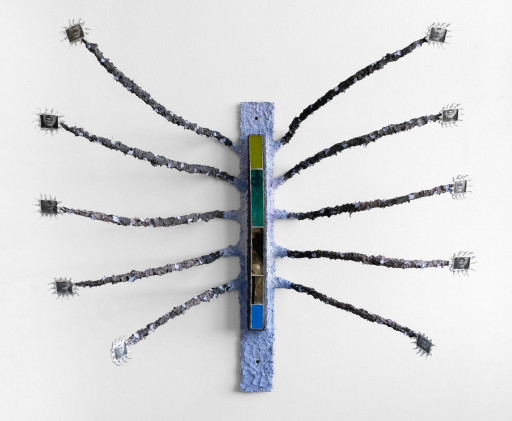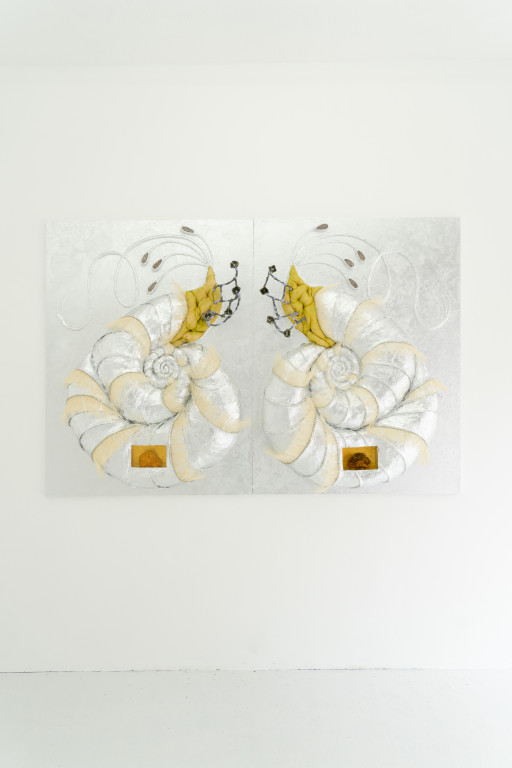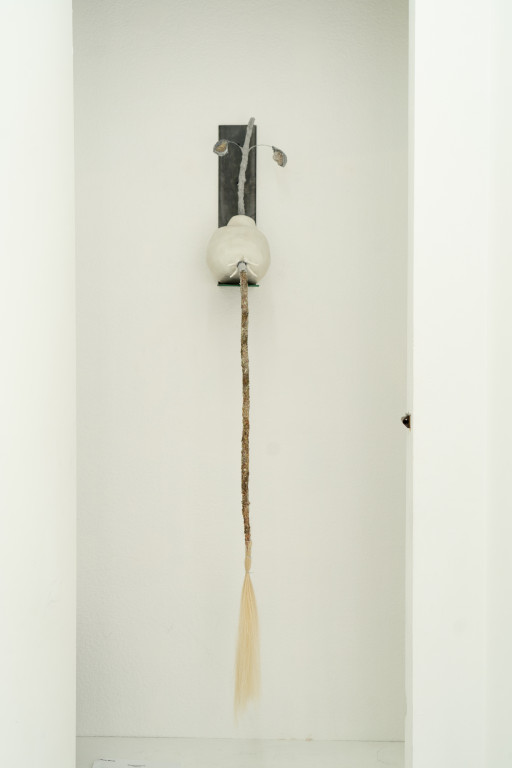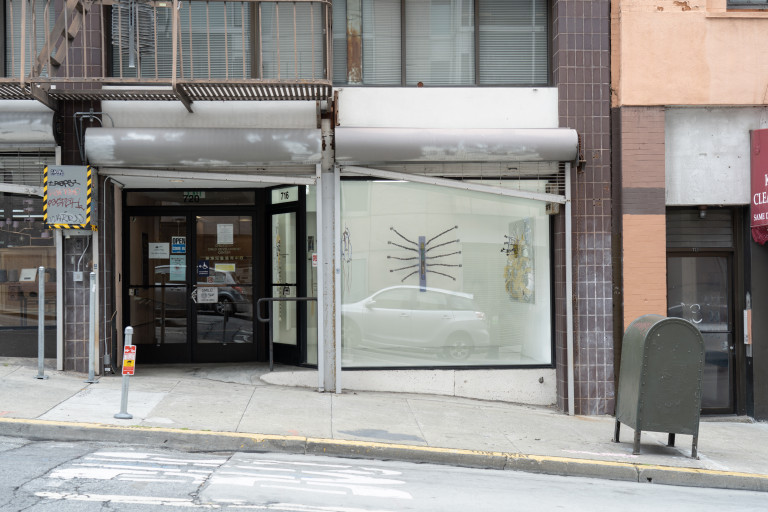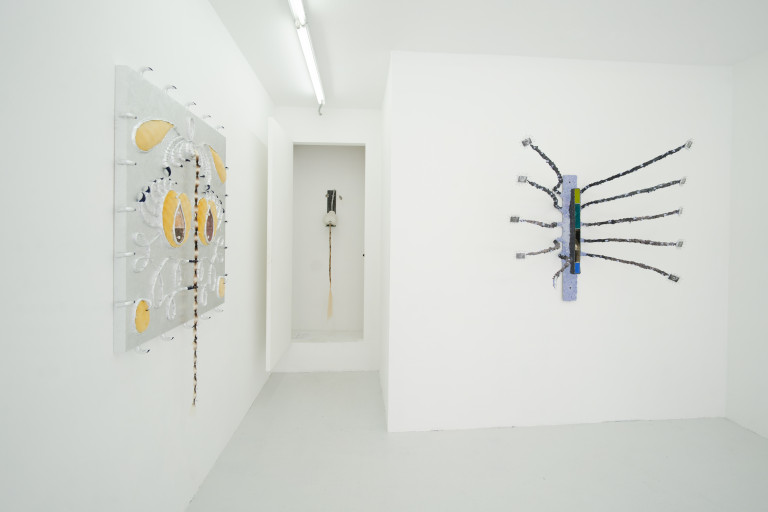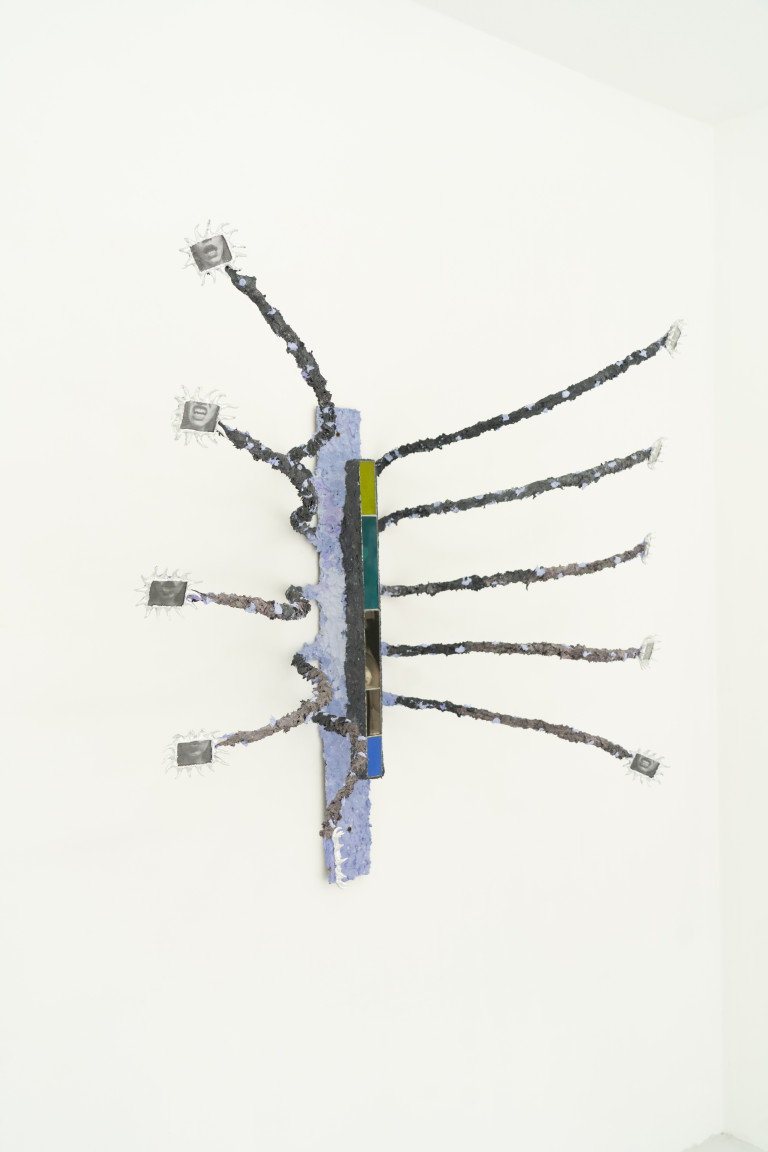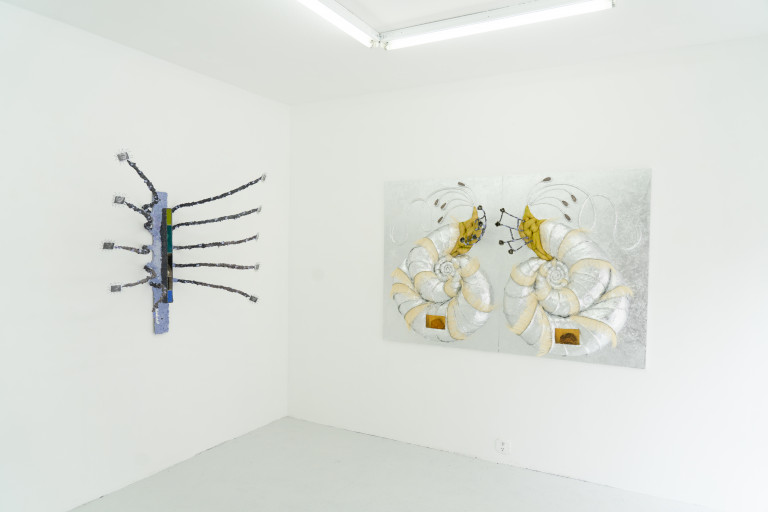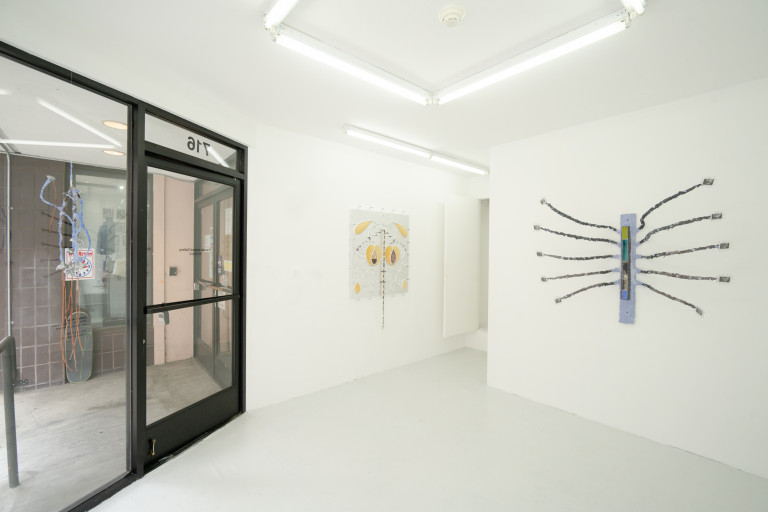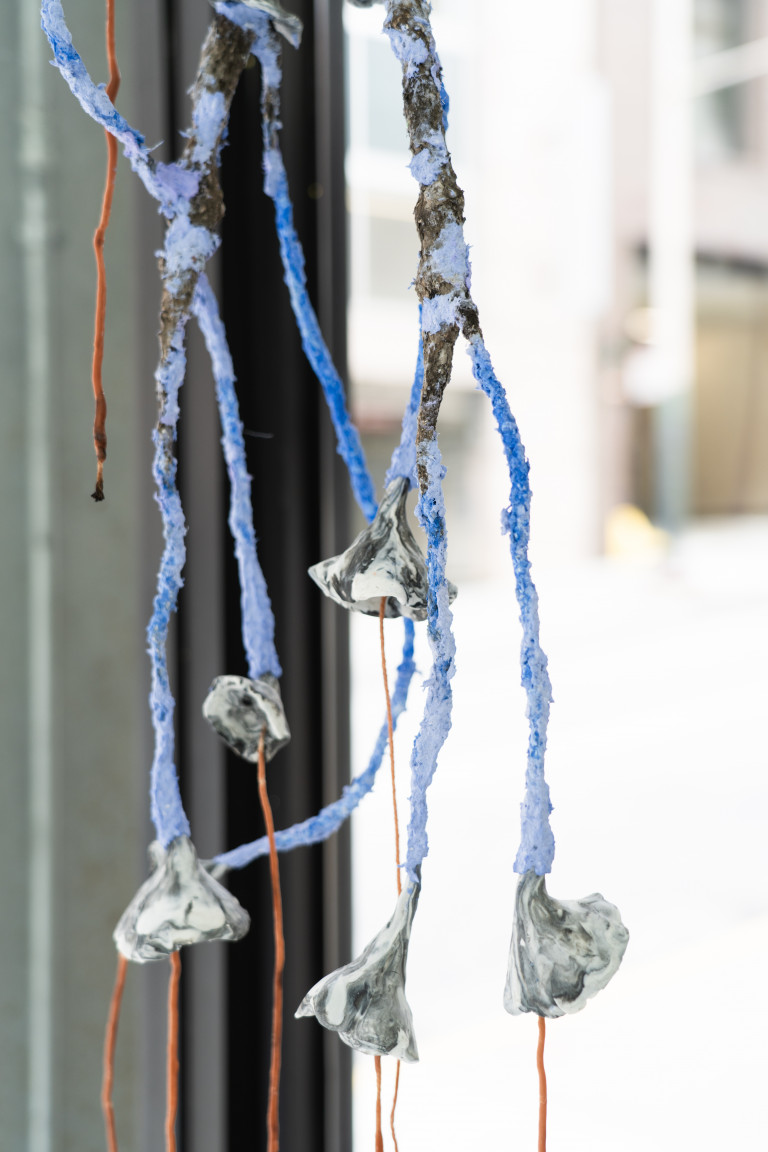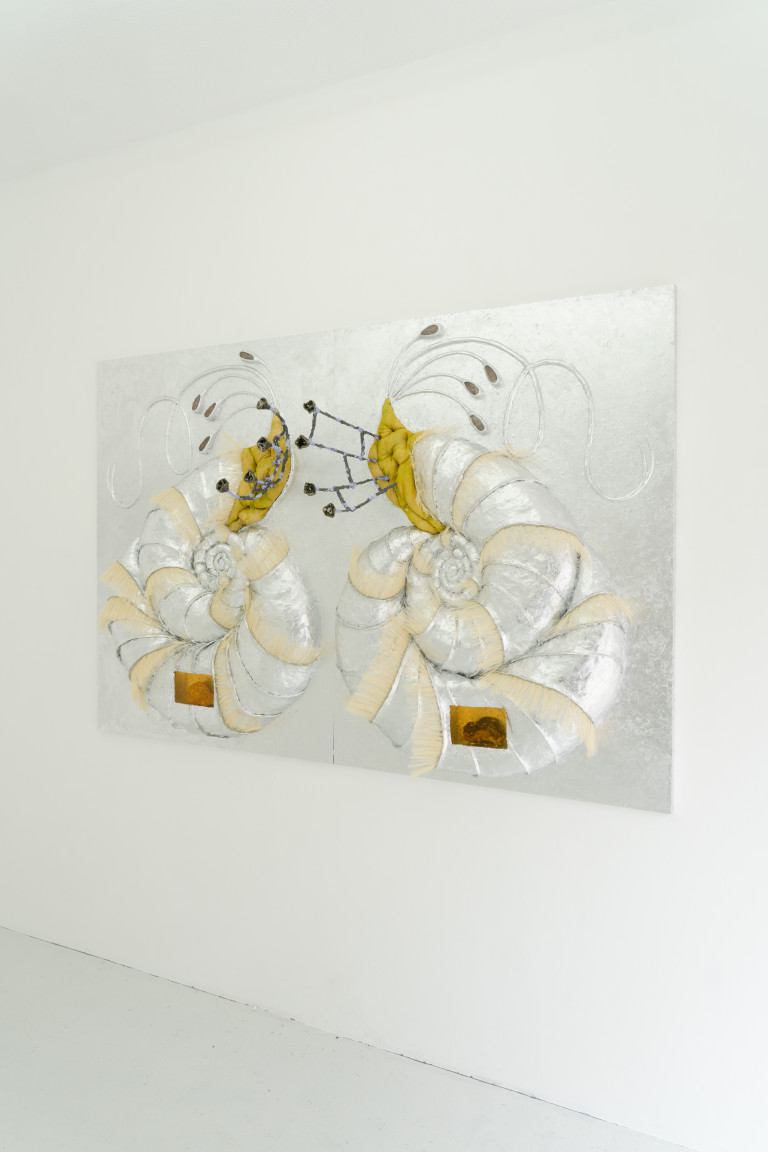Micki Meng presents Tragada, a solo exhibition by Estefania Puerta at the gallery’s Chinatown, San Francisco location. Opening on June 22nd, the exhibition continues through July 28, 2023.
The list of materials that Estefania Puerta employs for building sculptural works are vast, deceptive, and playful. Enticing viewers, the materials are both seen and unseen, engulfed by their own presence. Each surface germinates forms that enhance their destined transformation. The raw substance, as well as the actions inflicted upon them, amplifies a poetic life within each work. As exemplified in ‘Like a thorn piercing through a tough skin that doesn’t know if it is open or broken’, in which a matrix of textures is sculpted in plaster pulp, acrylic, stained glass, aluminum leaf, and steel to form a biomorphic creature anchored vertically with limbs reaching out to the viewer. Appendages lurch out displaying photographs of mouths at the ends that are caught in acts of chewing, speaking, blowing, or swallowing. Niches at the body’s center are in-set with stained-glass like reliquaries with precious compartments.
Encasing natural elements, these small alcoves are repeated throughout Puerta’s work. In the diptych Luz/Helena, mugwort and the volcanic rocks from El Nevado del Ruiz are housed within. Luz/Helena harbors an aura as the aluminum leaf catches light and the nautilus spiral of a creature is nourished by the components it stores. The work’s spiral implies growth and layers as bristles, plaster, and pulp transform into a revered creature. In nature, spirals eloquently follow precise rules of sacred geometry, studied since ancient times and affirmed in scientific studies today. These natural forms and morphic beings thereby express transformation, femininity, gentleness, and aggression.
In Soltera, the vines, ovals, and claws mirror to create an open shape akin to a dissected flower. Within the ovarian forms, quail eggs are encased. Memory foam accents are embedded into an aluminum-coated surface that reflects light and shadows activated by the viewer. Exaggerated and glamorous, long nails of vines and hair are proudly exhibited while also acting as protection. Over and over again, Puerta transforms materials while allowing each amassed piece to stake their own power, dominance, movement, and alchemy.
Puerta’s lists of singular and significant materials draws upon a deep well of tender relations with the world. For example, the encased plants carry herbal properties, some utilized by people and others not. Moreover, earthly elements such as volcanic rocks, steel, and aluminum carry transformative properties. The sculpture Implant exemplifies these qualities as a smaller sculpture becomes an altar for emblems and a complex being grows into a larger sculptural form.
Estefania Puerta’s sculptural surfaces are onomatopoeias onto themselves, transforming with each selected material. The title, Tragada, is apt as the tongue roll of the letter ‘t’ and ‘r’ impedes the act of swallowing or being swallowed. Tragada, in short, describes the hypnotic movement of a subject’s asphyxiation at the crossroads of change, remaining the same, or perhaps regenerating.
— Eva Mayhabal Davis
Estefania Puerta is interested in what is gained and lost in the process of recontextualizing materials. Her practice is rooted in worldmaking, shapeshifting, border crossing, and language failure. Her research in psychoanalysis as it relates to the history of hysteria, natural medicine, folklore, and personal histories of immigration and undocumentaion in the U.S. questions what is considered “natural” and “alien. Puerta was recently awarded the 2023-2024 Rome Prize by the American Academy in Rome. Her work has been exhibited at Proyecto N.A.S.A.L (CDMX and Guayaquil), Fortnight Institute (NYC), Micki Meng (SF), Species (ATL), and was included in the New England Triennial at DeCordova Sculpture Park and Museum. Puerta received her MFA from Yale School of Art. She was born in Colombia and currently lives and works between Vermont and New York.

